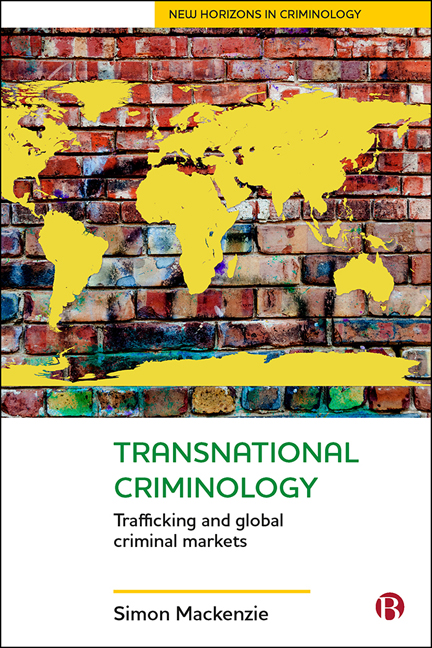Book contents
8 - Conclusion: A Social Theory of Transnational Criminal Markets
Published online by Cambridge University Press: 25 February 2021
Summary
Common themes in global trafficking markets and links between them
In the course of the book we have discovered some common themes that seem to tie the trafficking markets we have studied together. Some of these themes are relatively routine, simply helping us to understand the functional commonalities across forms of trafficking. Some seem more profound and it is these that will be most helpful to reconsider in moving towards, if not definitively formulating, a social theory of trafficking. We will work through these common themes in this concluding chapter and also consider the question of practical overlaps between the transnational criminal markets we have covered.
Trafficking markets tend to be structured as networks: whether the analytical approach is production–export–import–wholesale–retail as in drug trafficking or the more straightforward source–transit– demand we have seen as a useful heuristic for all types of trafficking, the structure normally involves the linking together in a chain of supply of actors or small groups who operate only as nodes on one of the levels. We have struggled to find examples of omni-present organized crime that controls the entire chain from supply to demand. The usual structure is local producers, finders or takers who sell on to international-facing dealers or traffickers, who then sell into the lucrative retail markets abroad. There may well be more links in any given trafficking chain of supply, but there are rarely less. Such structures, composed of entrepreneurs operating at separate levels, are essentially therefore structures of ‘business dealings among persons with different specialisations’ (Haller 1990: 223).
Trafficking often blurs the distinction between legal and illegal business, and many traffickers exist with one foot in the conventional business world and the other in crime. Antiquities dealers knowingly fence looted artefacts; diamond traders mix conflict diamonds with their legal supply; drug dealers launder their profits through conventional ‘front’ business enterprises such as garages and nightclubs, which operate for most purposes like legal operations; arms dealers make legal trades while also selling off the books to unsavoury regimes; and so on. As there exists considerable consumer demand for the products of these global illicit commodities and services, markets flourish in which no participants have any reason to enquire too closely about the origins or transnational movement, legal or illegal, of the things being bought and sold.
- Type
- Chapter
- Information
- Transnational CriminologyTrafficking and Global Criminal Markets, pp. 121 - 136Publisher: Bristol University PressPrint publication year: 2020



